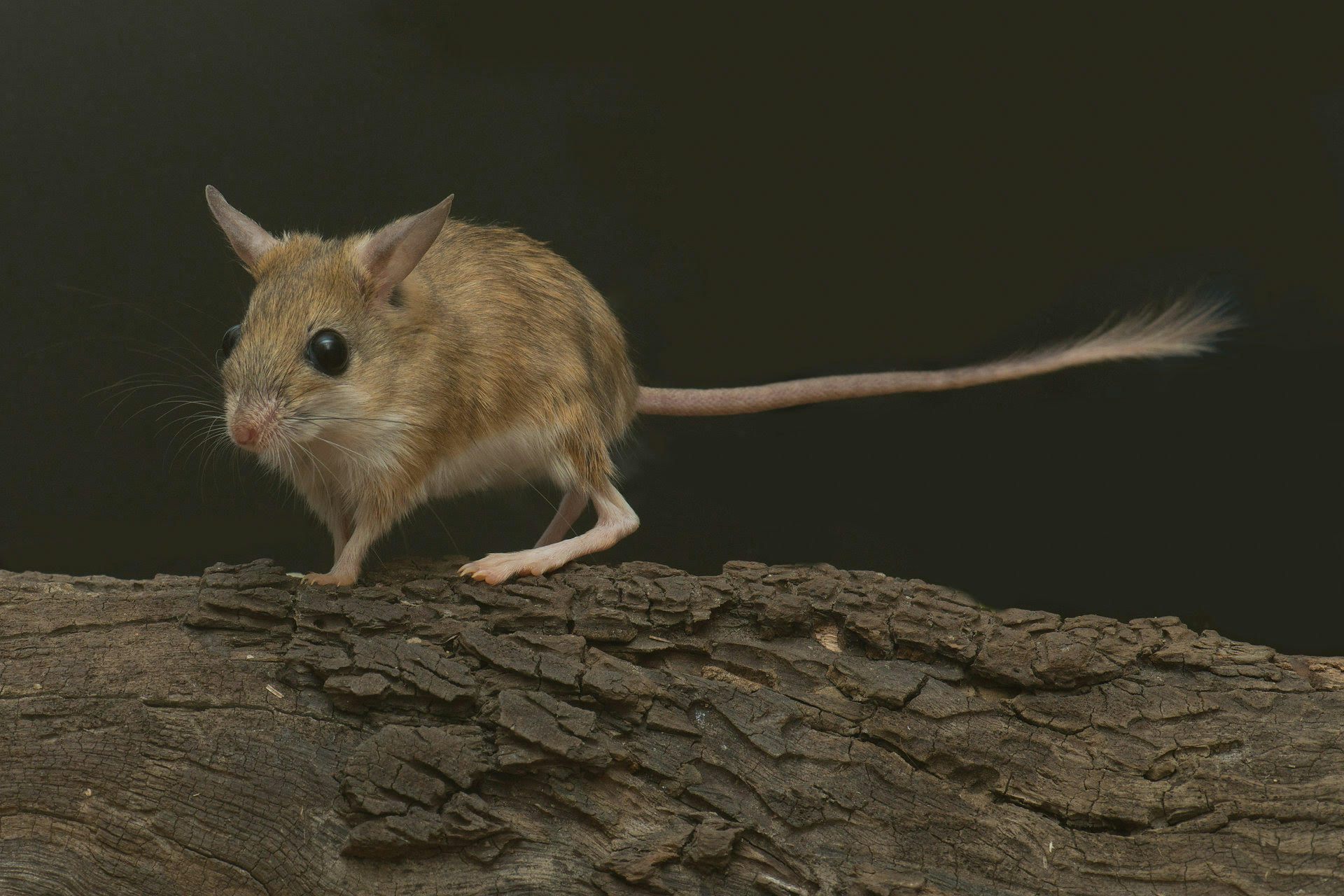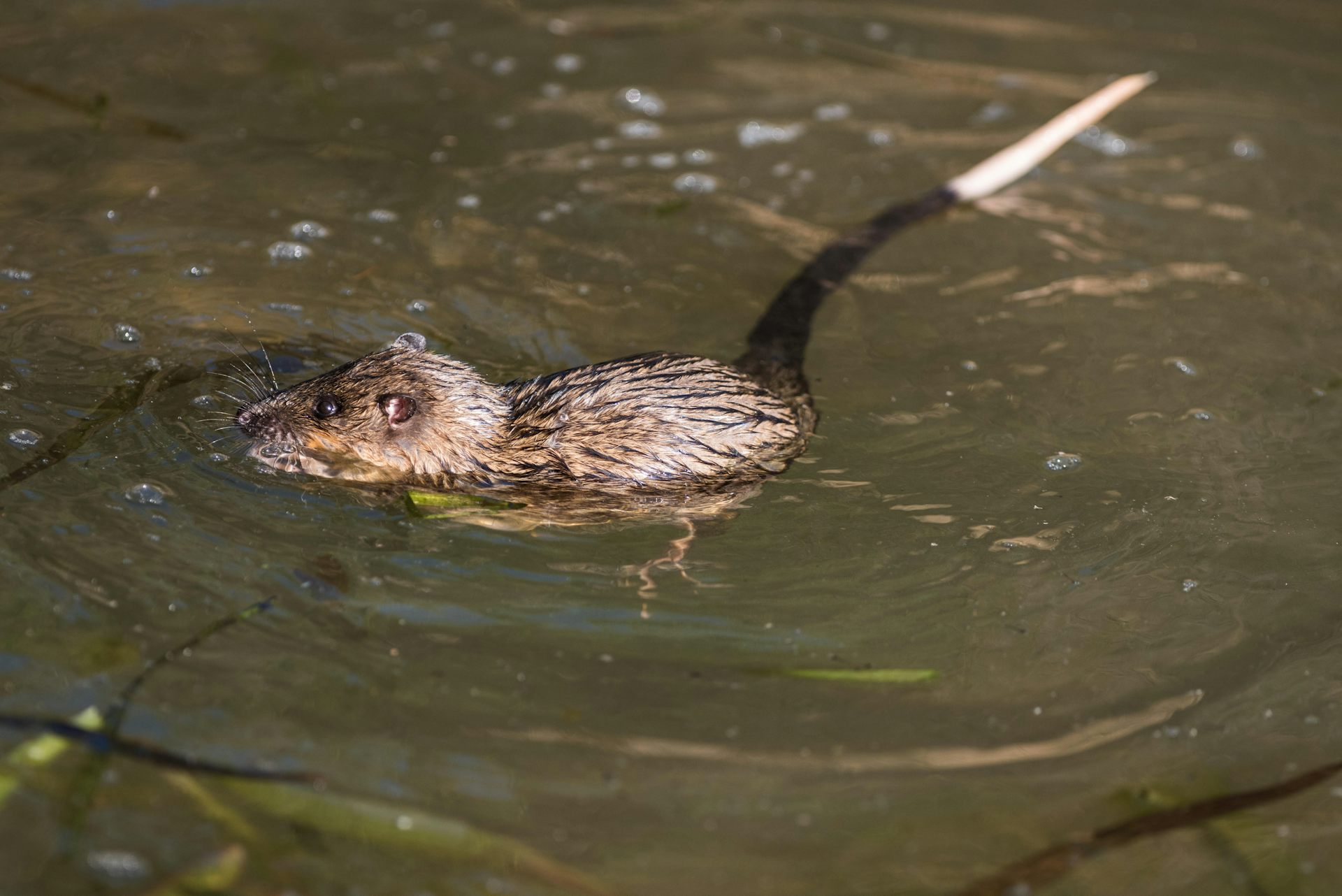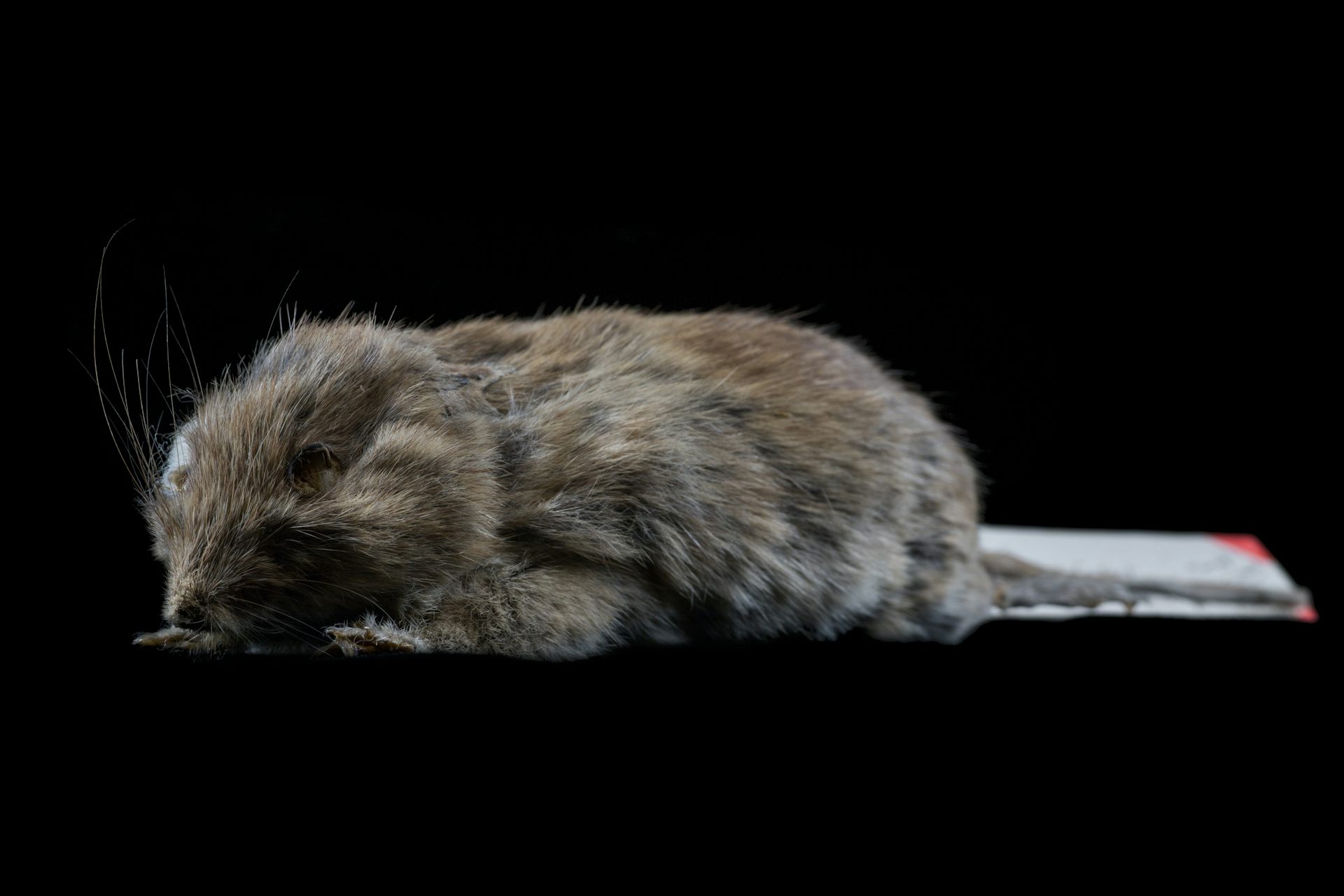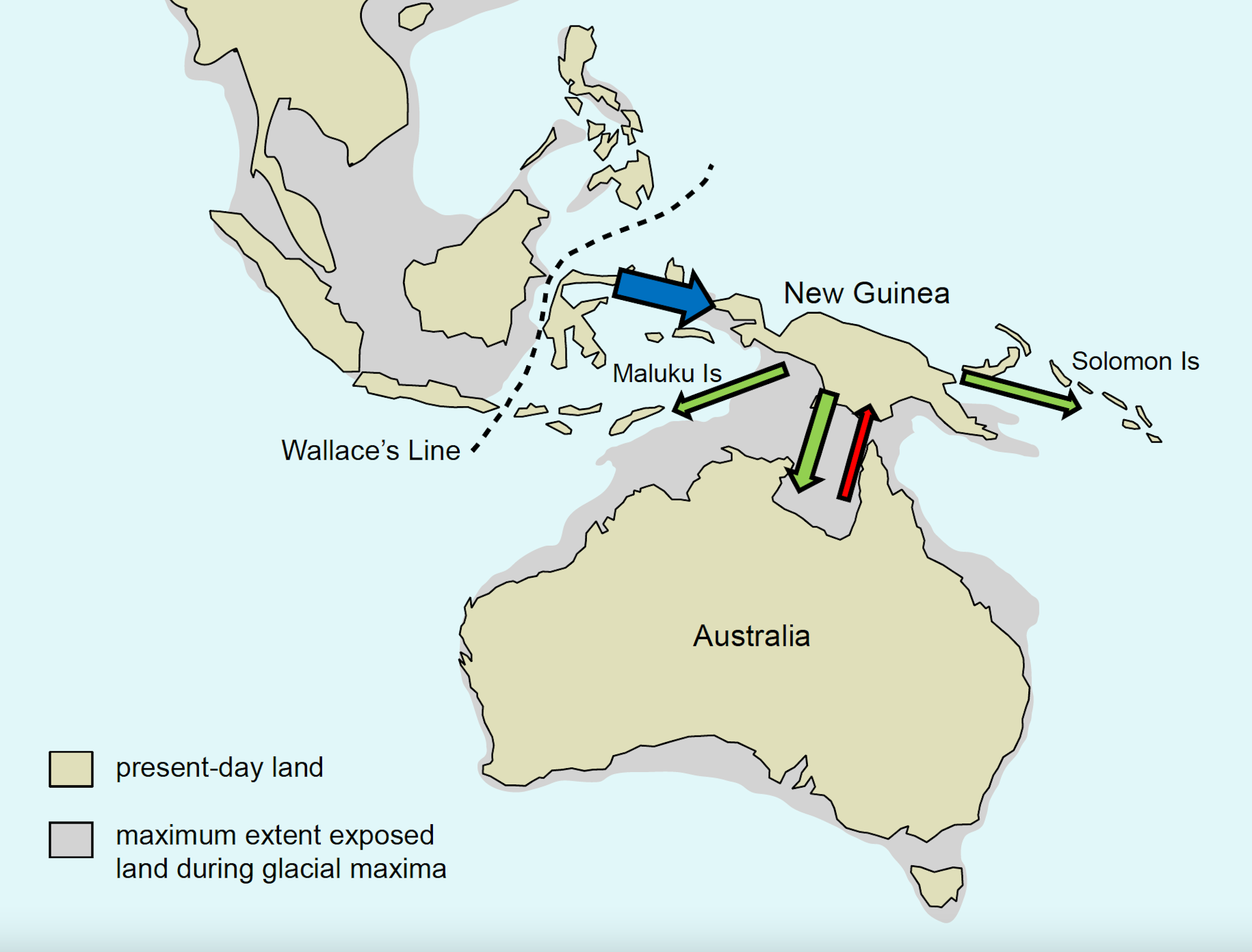
A hopping mouse of the Notomys genus. Hopping mice have evolved highly efficient kidneys to deal with the low water environments of Australia’s deserts.
Credit: David Paul/Museums Victoria
I've remarked before about how well the Theory of Evolution as an explanation for the biodiversity in animals, plants and fungi we see all around us, consistently meshes with other strands of science. For example, plate tectonic and the timing of the splits and collisions of land masses that have occurred exactly coincides with the deduced evolutionary divergence in major branches of the tree of life, so explaining the relationships between species on unconnected land masses such as Africa and South America or Europe and North America.
Here we have an account of the colonisation of Australia and New Guinea and neighbouring islands by rodents, and their evolutionary diversification, that exactly meshes with the rise and fall of sea level during cycles of glaciation and glacial regression, and with known periods of mountain building in New Guinea that transformed it from a group of small islands into a single large mountainous island.
The study, led by Dr. Emily Roycroft, a postdoctoral research fellow with the Australian National University's Division of Ecology and Evolution, Research School of Biology, Acton, ACT, Australia, and Pierre-Henri Fabre, of the Institut des Sciences de l’Evolution, Université de Montpellier, Montpellier, France, with colleagues from the Australian National University, and the Science Department, Museums Victoria, Melbourne, Victoria, Australia, is published in the journal,Current Biology. Sadly, the main body of the paper is behind a paywall, despite the journals claimed support for open access publishing. However the abstract is available here.
Lead author, Dr Emily Roycroft has also written about their research in the open access online magazine The Conversation which, if you want factual, objective analysis of news, is well worth reading. Her article is reproduced here under a Creative Commons license, reformatted for stylistic consistence. The original article can be read here.

‘Impressive rafting skills’: the 8‑million‑year old origin story of how rodents colonised Australia

Emily Roycroft, Australian National University
A single, pregnant rodent floating on driftwood across the treacherous waters between Asia and New Guinea 8.5 million years ago may be behind the eventual colonisation of native rodents in Australia, our new research suggests.
Today, Australia has more than 60 species of native rodents found nowhere else in the world. When you count their close relatives across New Guinea and island neighbours, there are over 150 species. These include the rakali, an otter-like rodent with webbed feet, and desert hopping mice that get around like tiny kangaroos.
Until now, we’ve had an incomplete picture of how there came to be so many species. Our new research unites genomic sequencing and museum collections to reconstruct the evolutionary tale of native rodents, including many extinct and elusive species – and they have a fascinating origin story.
Native rodents have also suffered the highest rate of recent extinction of any mammal group in Australia, with 11 mainland species declared extinct since European colonisation in 1788. Many surviving native rodents remain at serious risk of extinction, with urgent conservation action needed to secure their future.

The semi-aquatic rakali (Hydromys chrysogaster) is a native rodent distributed across New Guinea and Australia. Rakali are part of the Hydromys Division, a group that has colonised Australia from New Guinea at least twice in the last million years.
Credit: David Paul/Museums Victoria
New methods, old specimens
We extracted and sequenced DNA from museum specimens collected up to 180 years ago to unlock the secrets of the most elusive species.
In one case, we sequenced DNA from a specimen of Guadalcanal rat from the Solomon Islands collected over 130 years ago. The Guadalcanal rat was last seen alive when these specimens were collected in the 1880s, and hasn’t been recorded since.
It’s listed as critically endangered, and is very possibly already extinct.
Like the Guadalcanal rat, every single specimen we studied has its own fascinating history. Together, they tell an 8-million-year long evolutionary story.

This is a specimen of Gould’s mouse from the Natural History Museum in London.
Credit: Trustees of the Natural History Museum London/C. Ching
The genetic relatedness of distant rodent relatives tells us the ancestor of Australia’s native rodents originated in southeast Asia. There’s never been a land connection between Asia and New Guinea, and so we know this must happened via over-water colonisation – possibly on a piece of driftwood.
Our research dates this event to around 8.5 million years ago. Both New Guinea and Australia looked very different back then.
In contrast to the large and high-elevation island of modern New Guinea, 8.5 million years ago it was likely made up of a series of smaller, disconnected islands.
Our results show the earliest arriving rodent ancestors, probably tropical forest specialists, initially spread across this earlier New Guinea. But they then stayed put for 3.5 million years.
Read more:
This adorable mouse was considered extinct for over 100 years — until we found it hiding in plain sight
A shared evolutionary story
Around 5 million years ago, New Guinea experienced a big geological change. Tectonic activity triggered the uplift of an impressive mountain range through the centre of New Guinea, and led to the formation of expansive lowlands.
This expansion opened new environments for rodents to adapt to, and increased connectivity between New Guinea, Australia, and neighbouring islands.
From there, things really took off.
Rodent ancestors first arrived from New Guinea into Australia around 5 million years ago, probably via a land bridge exposed during a period of low sea level.
In Australia, they have adapted to many new environments including the harsh arid desert. In the last few million years, rodents have been especially mobile – repeatedly moving between New Guinea, Australia and neighbouring island archipelagos, generating many new species in the process.

Native rodents first arrived to New Guinea from Asia 8.5 million years ago, and then arrived to Australia 5 million years ago. Over the past few million years, they also have spread across the Solomon and Maluku Island archipelagos.
Quite often, this has happened via over-water colonisation. Just like their ancestor, who crossed the waters from southeast Asia 8.5 million years ago, native rodents have continued to leverage their impressive rafting skills.
And yet, despite this remarkable flexibility across evolutionary time, native rodents have not been able to tolerate the dramatic changes to their environment that have occurred in the past 200 years.
Read more:
The epic, 550-million-year story of Uluṟu, and the spectacular forces that led to its formation
Protecting native rodents
Since 1788, we’ve lost 11 native rodent species to extinction. These include the white-footed rabbit-rat and the lesser stick-nest rat, once common on the Australian landscape.
Native rodents are particularly susceptible to predation by feral cats and foxes, land clearing, competition with pest rodents, and introduced disease. These ongoing threats place surviving species at serious risk of extinction.
One of Australia’s most critically endangered mammals, the central rock-rat, is on the brink of extinction after extensive habitat loss and predation by cats and foxes. Captive breeding programs are underway to boost population numbers.

A smoky mouse (Pseudomys fumeus) in the Grampians-Gariwerd National Park, Victoria, Australia. The smoky mouse is part of an evolutionary group that originated after colonisation of Australia from New Guinea around 5 million years ago, and is currently endangered after suffering population declines.
Credit: David Paul/Museums Victoria
We know even less about the conservation status of many species in New Guinea, the Solomon Islands and Maluku Islands.
By combining genetic data from both modern and historical specimens, our new research takes stock of the diversity of native rodents, and will help to define and prioritise species for conservation efforts.
By understanding how our native rodents evolved, we can make more informed decisions about how best to protect them into the future.
Read more:
'Death by irony': The mystery of the mouse that died of smoke inhalation, but went nowhere near a fire
HighlightsThe fact that the Theory of Evolution, confirmed yet again by these findings, forms the foundation of biology and meshes so perfectly with other strands of science, in this case, geology and climatology, will probably have no effect on those creationists trying to protect their absurd belief that the TOE is a theory in crisis, by carefully ignoring evidence such as this that they have been fooled by frauds with a hidden political agenda.
- Species-level phylogeny of Sahul rodents, including extinct and elusive species
- Geological uplift in New Guinea from 5 Ma triggered diversification across Sahul
- Complex biogeographic history, including 23 geographic and 34 biome transitions
- Over-water colonization and islands are important sources for continental radiations
Summary
Sahul unites the world’s largest and highest tropical island and the oldest and most arid continent on the backdrop of dynamic environmental conditions. Massive geological uplift in New Guinea is predicted to have acted as a species pump from the late Miocene onward, but the impact of this process on biogeography and diversification remains untested across Sahul as a whole. To address this, we reconstruct the assembly of a recent and diverse radiation of rodents (Murinae: Hydromyini) spanning New Guinea, Australia, and oceanic islands. Using phylogenomic data from 270 specimens, including many recently extinct and highly elusive species, we find that the orogeny and expansion of New Guinea opened ecological opportunity and triggered diversification across a continent. After a single over-water colonization from Asia ca. 8.5 Ma, ancestral Hydromyini were restricted to the tropical rainforest of proto-New Guinea for 3.5 million years. Following a shift in diversification coincident with the orogeny of New Guinea ca. 5 Ma and subsequent colonization of Australia, transitions between geographic regions (n = 24) and biomes (n = 34) become frequent. Recurrent over-water colonization between mainland and islands demonstrate how islands can play a substantial role in the assembly of continental fauna. Our results are consistent with a model of increased ecological opportunity across Sahul following major geological uplift in New Guinea ca. 5 Ma, with sustained diversification facilitated by over-water colonization from the Pleistocene to present. We show how geological processes, biome transitions, and over-water colonization collectively drove the diversification of an expansive continental radiation.
Roycroft, Emily; Fabre, Pierre-Henri; MacDonald, Anna J.; Moritz, Craig; Moussalli, Adnan; Rowe, Kevin C.
New Guinea uplift opens ecological opportunity across a continent
Current Biology 2022; DOI: 0.1016/j.cub.2022.08.021
© 2022 Elsevier Inc.
Reprinted under the terms of the Copyright, Designs and Patents Act 1988, s60.



No comments :
Post a Comment
Obscene, threatening or obnoxious messages, preaching, abuse and spam will be removed, as will anything by known Internet trolls and stalkers, by known sock-puppet accounts and anything not connected with the post,
A claim made without evidence can be dismissed without evidence. Remember: your opinion is not an established fact unless corroborated.